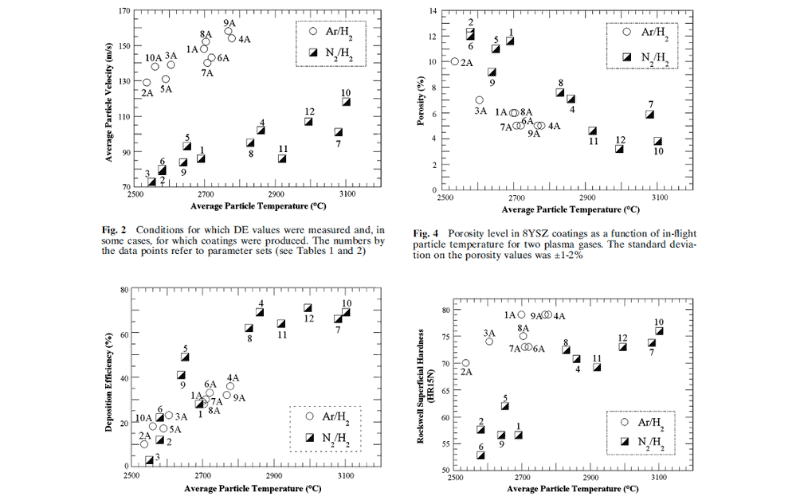October 10, 2007
Yttria-Stabilized Zirconia Thermal Barriers Sprayed Using N2-H2 and Ar-H2 Plasmas: Influence of Processing and Heat Treatment on Coating Properties
Thermal barrier coatings were produced using both Ar and N2 as the primary plasma gas. Various aspects of the process and the coatings were investigated. It was found that higher in-flight particle temperatures could be produced using N2, but particle velocities were lower. Deposition efficiencies could be increased by a factor of two by using N2 as compared to Ar. Coatings having similar values of porosity, hardness, Young’s modulus, and thermal diffusivity could be produced using the two primary gases. The coatings exhibited similar changes (increased hardness, stiffness, and thermal diffusivity) when heat-treated at 1400 °C. However, the N2-processed coatings tended to have lower values of Young’s modulus and thermal diffusivity following such treatment. The results point to the potential advantage, in terms of reduced powder consumption and increased production rate, of using N2 as compared to Ar as the primary plasma gas for TBC deposition.
Key words: deposition efficiency, elastic properties, in-flight particle characteristics, nitrogen-hydrogen plasmas, thermal barrier coating, thermal diffusivity, thermal treatment
Originally published at Journal of Thermal Spray Technology (10 October 2007, Volume 16, pages 791–797, (2007)
By B.R. Marple, R.S. Lima, C. Moreau, S.E. Kruger, L. Xie & M. R. Dorfman
